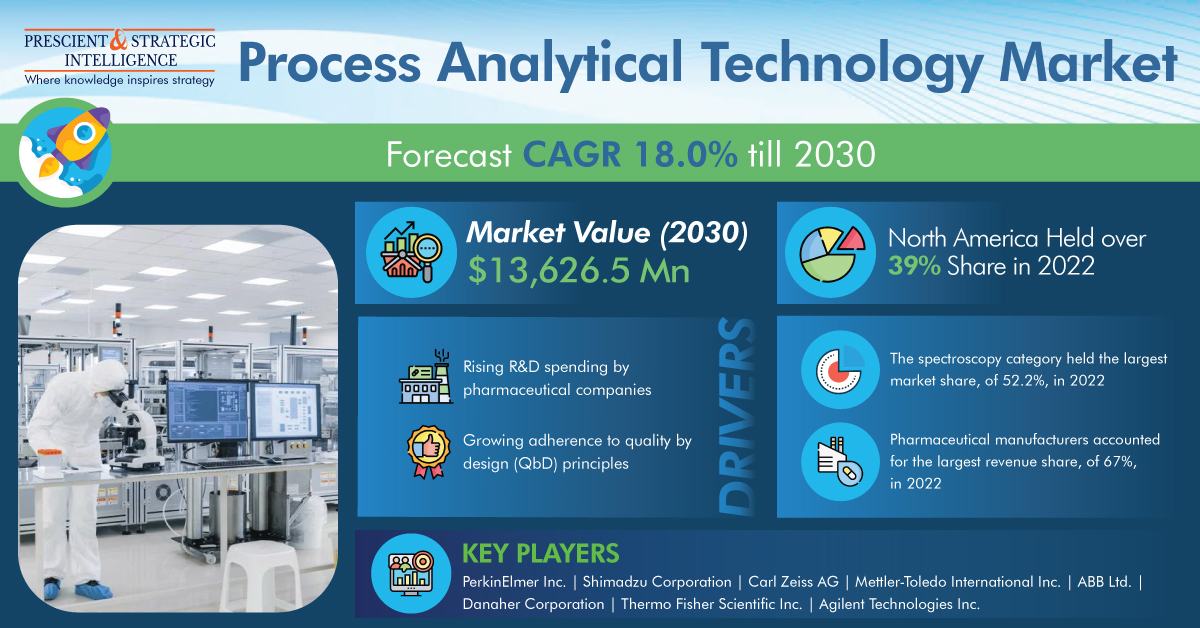The term “process analytical technology” (PAT) refers to a system for the analysis and control of production processes that measures essential quality criteria and performance characteristics of raw and in-process materials. It makes it possible to use in-process data to evaluate a batch’s quality during manufacturing, greatly lowering the requirement for final product testing, and thus shortening lead times.
Moreover, PAT has been crucial to the pharmaceutical industry’s process development and scale-up of asymmetric chiral compound syntheses, including active pharmaceutical ingredients. Thus, the process analytical technology market is expected to hit USD 13,626.5 million by 2030, as per P&S Intelligence.

Rising Importance of PAT in Pharmaceutical Industry
The pharmaceutical manufacturers category holds the largest share, of 67%, in the market. This is due to the growing importance of PAT in the pharmaceutical industry’s process development and scaling-up of asymmetric syntheses of chiral compounds, including active medicinal components.
Moreover, the category of biopharmaceutical manufacturers is predicted to register the fastest growth rate. This is a result of the growing biotechnology sector and increasing requirement for biochemical analysis brought on by the acceptance and introduction of several biologic medications.
A Sample Can Be Examined at Various Stages Using Spectroscopy
In 2022, the spectroscopy technique accounted for the largest share, 52.2%, in the market, and this category is predicted to maintain the fastest rate in the years to come. This is explained by the rise in pharmaceutical and biopharmaceutical R&D efforts and the accompanying process optimization in technology.
Rising Government Investment in Biotechnology and Pharmaceutical Sectors in APAC
Moreover, the European region is set to advance at an 18.2% rate in the future years. Despite maturing, the region’s need for PAT products is mostly driven by the existence of large analytical technology businesses, a growing emphasis on quality, the expansion of the biotechnology sector, and rising R&D spending by pharmaceutical firms.